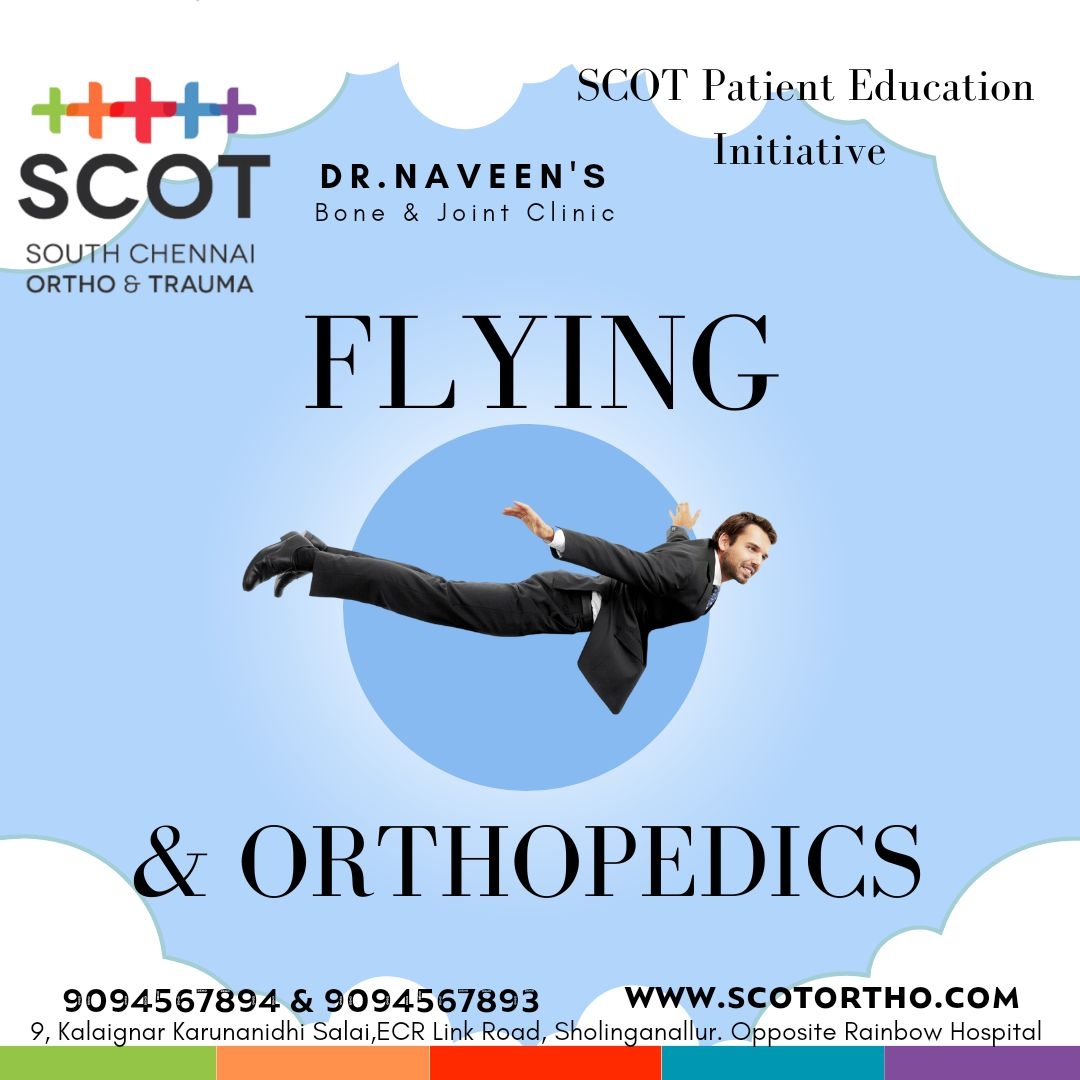Orthopedics and Air Travel: A Patient's Guide for a Comfortable Journey
For individuals with orthopedic conditions, the allure of exploring the world can collide with concerns about their physical limitations and potential health risks associated with air travel. However, a collaborative approach and proactive planning can transform apprehension into confidence, allowing for a comfortable and enriching travel experience. This article delves into the key considerations at the intersection of orthopedics and flying, empowering patients to advocate for their well-being and navigate the skies with informed assurance.
Pre-flight Planning:
- Physician Consultation: A comprehensive conversation with your doctor is crucial before your flight. Share your itinerary, discuss any pre-existing conditions, recent surgeries, and potential concerns you have. This dialogue allows them to provide personalized advice, assess your travel suitability, and address risks like deep vein thrombosis (DVT).
- Documentation: Assemble a detailed medical travel kit, including surgery reports, medication lists, a physician's clearance letter, and a clear summary of your condition. This documentation streamlines airport security procedures and facilitates communication with medical personnel in case of unforeseen situations.
- Compression Stockings: For individuals at increased DVT risk, compression stockings offer crucial protection. Discuss various stocking options and proper usage guidelines with your doctor to ensure optimal efficacy.
- Medications : Pack a sufficient supply of all prescribed medications for the entire trip, factoring in potential delays. Familiarize yourself with airline regulations regarding permitted liquid medication quantities to avoid unexpected challenges.
- Seek Assistance: If you rely on crutches, wheelchairs, or other mobility aids, notify the airline of your specific needs well in advance. This ensures they can arrange assistance at airports and on board, optimizing your mobility and maximizing comfort throughout the journey.
Inflight Well-being:
- Strategic Seating: Opt for aisle seats for easier movement and stretching during the flight. Bulkhead seats offer additional legroom, particularly beneficial for lower limb injuries. Utilize online seat maps to visualize the cabin layout and make informed choices.
- Keep moving: Regularly stand up and walk around the cabin whenever possible. This promotes circulation, prevents stiffness, and combats the effects of prolonged sitting. Ankle pumps and isometric exercises while seated can further enhance circulation and joint function. Details of exercises given below.
- Hydrate Yourself: Staying hydrated is essential in the dry cabin environment. Pack a reusable water bottle and sip frequently throughout the flight. Avoid excessive alcohol consumption, which can dehydrate and increase your DVT risk. This prevents muscle cramping also.
- Comfort Accessories: Consider investing in inflatable leg pillows or lumbar cushions to provide additional support and maintain good posture during the flight. These simple aids can significantly enhance your comfort and well-being on board.
Post-flight Recovery:
- Continued Movement: Don't let the journey end with landing! Upon arrival, prioritize stretching and light walking to avoid stiffness and promote circulation in your legs. Embrace the opportunity to explore your destination while keeping your body active and mobile.
- DVT Vigilance: Be aware of potential DVT symptoms like leg pain, swelling, or redness. If you experience any concerns, promptly seek medical attention to ensure your well-being.
- Physician's Directives: Adhere to the post-flight recovery recommendations provided by your healthcare professional. Their guidance is tailored to your specific needs and ensures a smooth transition back to your routine.
Additional Considerations: Navigating Nuances with Confidence
- Metal Implants: Inform security personnel about any metal implants you have. While X-rays are generally safe, alternative screening methods might be available. Open communication and collaboration with security staff ensure a smooth and efficient screening process. Carrying your medical records with details of implants and prosthesis will help.
- Insurance: Ensure you have adequate travel insurance that covers potential medical emergencies during your trip. Unexpected situations can arise, and comprehensive insurance provides peace of mind and financial protection.
- Ankle pumps: Flex and relax your ankles repeatedly, 10-15 times per set. Repeat once every hour when awake.
- Calf raises: While seated, rise up on your toes and hold for a few seconds before lowering back down. Repeat 10-15 times per set, several times throughout the flight.
- Knee extensions: Straighten your knee as much as possible while seated, hold for a few seconds, and then relax. Repeat 10-15 times per set.
- Neck rolls: Slowly roll your head in a circular motion, forward and backward, 5 times in each direction. Repeat several times throughout the flight.
- Shoulder shrugs: Raise your shoulders towards your ears, hold for a few seconds, and then relax. Repeat 10-15 times per set, several times throughout the flight.
- Wrist stretches: Gently bend your wrist back and forth, holding each stretch for a few seconds. Repeat 5 times in each direction for each wrist.
- Isometric exercises: Contract and relax your muscles without moving your joints. You can do this for various muscle groups, such as your quadriceps, glutes, and hamstrings. Hold each contraction for 5-10 seconds and repeat 5 times for each muscle group.
Additional Tips:
- Adjust your seat position: If possible, tilt your seat back slightly to reduce pressure on your back.
- Wear loose-fitting clothing: This will allow for easier movement and help reduce swelling.
- Avoid crossing your legs: This can restrict blood flow and increase your risk of DVT.
- Communicate with your doctor: If you have any concerns or experience any discomfort during the flight, be sure to communicate with your doctor or medical personnel on board.
Dr. Naveen Chowdary Tummala
9094567894 & 9094567893.
SCOT: Dr. Naveen's Bone and Joint Clinic,

Comments
Post a Comment